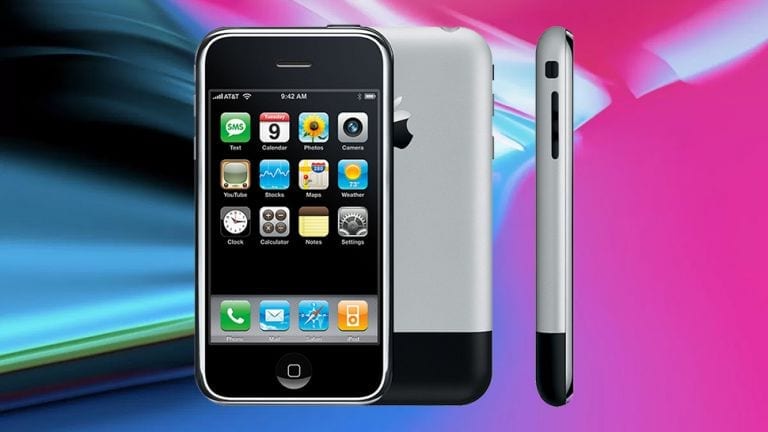There has been a dramatic shift in how we conduct business, access information, and communicate thanks to the advent of smart phones. The first iPhone came out in 2007, and ever since then, the market has been flooded with tools meant to improve and enrich our daily lives. Where did it all begin, though? Is there a single explanation for how cellphones came to rule our daily lives and alter our relationship with technology so drastically? This post will trace the evolution of smart phones from their early days to the present. We’ll examine the many technological developments that have shaped this business over time, as well as some of the more significant advancements that have contributed to their widespread use today.
Historically, this is the first smartphone.
IBM introduced the world’s first “smart phone,” the Simon Personal Communicator, in 1992. It may be used as a planner, phone book, notebook, email client, and fax machine.
In 1992, Simon introduced the world to the world’s first smartphone, the Simon Personal Communicator. IBM and BellSouth collaborated to develop the Simon, the first device of its kind to integrate cellular communication with pager functionality, facsimile transmission, electronic mail, and internet access. In addition, it featured a calculator, games, an address book, and a calendar.
The first functions of mobile phones were for voice communication and texting. But as time went on, cell phones started to include things like email, web browsing, and eventually apps. That’s what paved the way for the creation of “smartphones,” which are effectively portable mini-computers.
The Simon Personal Communicator, released in 1992, is widely regarded as the first smartphone. It was a multi-functional device that could be used as a calendar, notebook, calculator, world clock, and even a game console. But the name “smartphone” wasn’t coined until 1999, when Ericsson released the R380. The user could send and receive text messages, make phone calls, and access their inboxes and the web on the go all from this one handy gadget.
Smartphones have since skyrocketed in popularity due to their convenient portability and extensive feature sets. These days, you may choose from hundreds of different smartphone models from dozens of brands. Further technological development suggests this trend will persist.
A smart phone’s capabilities
A smart phone has numerous advantages over regular cell phones. Some of these features are:
Increased viewing area is a boon to productivity and awareness of the outside world.
With a greater resolution, photos and videos will look better on your phone, making it more suitable for reliving happy times and catching up on the news.
Thirdly, increased storage space means that more media can be kept on a smartphone than ever before. This implies that you can store all of your precious recollections in a single location, from which you can retrieve them at any time.
Fourth, the camera has vastly improved, making it possible to take professional-quality photos and videos from virtually anywhere with a smart phone.
Constant online connectivity: With a smart phone, you’re never far from the world’s information and the tools that can improve your life.
To put it simply, the app store
There is a digital marketplace called the App Store where iOS app developers can submit their products for download. It was released by Apple Inc. in 2008. For iOS devices, the App Store has more than two million options.
Games, productivity, social networking, and other types of apps can all be found on the App Store. Apps can be found at a wide range of price points, with many being offered for free. Apps may be downloaded to an iOS device in two ways: either straight from the app store or from a computer and then transferred through iTunes.
Since its inception, the App Store has seen staggering success, with more than 100 billion app downloads as of June 2015. Some estimates predict that the App Store will produce $30 billion in revenue for developers by 2020, therefore it has also been a substantial source of cash for them.
Android, an operating system.
Google’s Android is a mobile OS that it created. It is primarily intended for touchscreen mobile devices like smartphones and tablets, and is built on a modified version of the Linux kernel and other open source applications.
The first commercial Android smartphone was introduced in 2010, however Android itself didn’t become available to the public until 2008. Since then, Android’s popularity has skyrocketed; there are now more than a billion Android smartphones in use as of September 2015.
Google’s Android is a mobile OS that it created. It is built off of the Linux kernel and other open source software, and it is optimised for touchscreen mobile devices.
Since its initial public release in 2008, Android has had widespread adoption and adoption of the first commercial Android device occurred in 2010. After all these years, Android is still one of the most widely used mobile OSes out there, even after all the improvements it’s received.
Conclusion
The proliferation of smartphones is a very exciting phenomenon. It has changed the way we live by facilitating instantaneous communication and access to information. Every year brings more advanced features and apps to cellphones, expanding their usefulness in our daily lives. There’s no telling how far the smartphone revolution will go, but it’s reasonable to predict that its effects on the modern world will be seen for decades to come Read more

